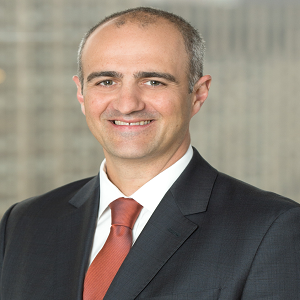“82% of millennials say workplace technology would influence them when deciding whether to accept a new job."
Change is a constant, but the pace of change is greater than ever, with greater impact on the way organizations run their global benefits programs Many factors involved are outside a company’s direct control, but nonetheless, put increasing pressure on the investment in, design and execution of — and value provided by — benefits within the wider value proposition.
Major trends — occurring at both societal and business levels — influencing how organizations think about their global benefits programs include:
- Business globalization
HR needs to be agile, respond to change quickly, achieve global consistency to ensure quality and efficiency, have single global suppliers to better control the supply chain and streamline operations to reduce costs and manual processes.
- Workforce pressures
Organizations need to address skills shortages while appealing to multiple generations, retaining employees in a mobile world and tackling the challenges of an aging workforce.
- Digitization
The focus on cloud-based technology and automation to improve efficiencies and effectiveness while meeting executives’ demand for data-driven HR decisions and employees’ desire for a consumer-grade technology experience is growing.
- Regulation and health costs
Regulatory reform, worsening health/ wellness profiles, spiraling health costs and demand for greater employee choice all add to the complexity of global benefits programs.
Given these challenges, many organizations find their current benefits approach isn’t delivering desired results. Many have no global strategy in place, and those that do are typically managing benefits manually or are using different local systems, making consistency and governance nearly impossible.
But it doesn’t have to be this way. By harnessing the power of technology and the data within it to inform and optimize each part of the benefits process, employers can address key concerns and derive valuable results for their businesses.
Transforming HR Technology
No one likes to perform low-value administrative tasks or deal with mistakes and errors — people want to make a difference at work. Thankfully, automation algorithms are changing the role of HR, replacing manual administration and allowing teams to focus on value-added work. Research by Gartner shows that by 2020, half of roles will be impacted or even totally disrupted by technology[1]. This is further demonstrated by research from
Sierra-Cedar showing that recruitment for administrative roles is decreasing even as recruitment for HR technology and analytics roles is on the rise[2].
As this shift continues, analytics will become the only way to inform decision-making, and artificial intelligence (AI) will become the new way to support employees and provide service. For the first time, employers will be able to measure every aspect of their benefits strategy and delivery to optimize performance by evaluating success and adapting to challenges as they arise.
Employees Demand Consumer-Grade Experience
In the past few years, employees have started making more decisions about their careers based on experiences with their employers. Some 80% of millennials reach for their smartphones when they wake[3]. People increasingly buy products based on how quickly they can get their delivery. So it’s hardly surprising that 82% of millennials say workplace technology would influence them when deciding whether to accept a new job[4].
Companies that understand and accept this cultural shift are responding by eliminating paper-based processes. But the pace of workplace technology adoption has been slow. To meet employee demands and secure the best talent, employers must reconsider how they serve their employees.
AI is Driving Self-Service on Demand
In the digital world, AI is rapidly becoming the best way to support employees and provide service — a major reason tech giants are investing enormously in this space. In fact, most investment analysts see 2017 as the year AI functioning as a personal assistant really starts to take hold[⁵].
It’s not just about employees. A large ecosystem is now being developed in the corporate world to improve the roles of contact centers and improve customer experiences. Contrary to conventional wisdom, the best customer service isn’t focused on servicing the unhappiest of clients but on ensuring minimal contact. Anyone who has used online chat support has likely had a good portion of the conversation automated and perhaps dealt with an agent who has simply checked prepopulated responses. Every time an agent marks a response as correct, the bot learns, improving the customerexperience.
Data Drives HR Decision Making
In the employee arena, companies are sitting on huge amounts of data, leading to changes in the way they make decisions. In coming years, executive leaders will increasingly expect all recommendations to be based on real-time, accurate and even predictive data.
Ultimately, the role of human capital management vendors will change — as will the way companies think about buying from them. For many employers benefits command the single largest spend outside of pay, yet chief HR officers currently devote a tiny portion of their time to ensuring they’re getting the maximum value. Analytics will provide the ability to unlock the value of the enormous benefits spend — giving benefits increasingly strategic importance to the chief HR officer.
The Role of Benefits is Changing
These changes couldn’t come at a better time. Traditionally, benefits were used to provide a safety net in a working career in case an employee died, developed a long-term illness or needed income in retirement. But workers today no longer stay with their employers for life — 72% of workers expect to change their jobs more than three times in their careers[⁶]. As a result, the relationship between employee and company has changed. At the same time, companies have been shifting liabilities to their workforces.
As employers recognize that a healthier, happier and more engaged workforce creates a more productive organization, benefits trends are undergoing major change. Companies want to focus more on health and wellness so employees won’t get sick — and will get back to work quickly if they do get sick. Employers also want to help alleviate employees’ everyday worries. In short, they want their benefits programs to show their workers that they care and are doing the most they can to help.
Technology has aided this transition as companies move more benefits into reimbursement-style accounts that empower employees in managing their health and finances. Employers can also take advantage of platforms that allow users to access information on the move in a format that’s relevant to them. Furthermore, the proliferation of wearable trackers and gamification helps promote employee dedication to health and wellness.
Mercer Marsh Benefits Powered By Darwin: A New Solution
Having a vision for a better approach to global benefits is one thing; delivering it in the right way is another. Given the transforming HR arena and the growing focus on digital technology, Mercer Marsh Benefits has developed and tailored an approach to addressing organizations’ needs as they go down this path of disruption.
Too often, global benefits management is focused on fixing immediate problems or using tactical responses rather than setting strategies and plans in motion to drive the right outcomes — whether for engagement, productivity, sustainability or effectiveness — in a demonstrable way. Proactive organizations seek a partner that is flexible enough to address unique needs and stay adaptable over time rather than simply dictating a course of action. Global consistency is also essential, as is expertise with regulatory compliance.
Ultimately, multinationals need a partner with an eye on the future to see coming trends and develop responses before others do. Darwin™, acquired by Mercer in December 2016, is a cloud-based, technology-driven solution that meets these needs for all aspects of benefits communication and
administration. It communicates and manages global benefits day to day, in multiple currencies and languages, helping improve user experiences, efficiency of processes and informed decision making. It also helps transform the broking process, with globally consistent data that accelerates the adoption of international pooling and captives, providing better long-term financing and risk management solutions for global benefits.
The technology also improves consultancy, harnessing data and engagement with employees to drive deeper insights and identify trends and patterns. The uniqueness of the solution is in how it transforms the role of anyone who works with benefits. Non-value added activities become automated, eliminating waste and elevating individuals’ roles, driving outcomes for the company and employee alike.
Conclusion
As HR contends with a host of mounting challenges — globalization, workforce pressures, digitization, regulatory reform, healthcare costs — it’s also being asked to step up and find new ways of working, spending less time performing wasteful administrative tasks and focusing more on becoming strategic advisors who drive business outcomes. Many organizations still struggle with strategic benefits management and are ill-equipped to address these trends.
The rise of powerful technology platforms, such as Darwin, along with providing consulting expertise will help HR harness the power of its data to gain maximum insights and optimize the benefits management process. This, in turn, will transform decision-making to drive desired outcomes and, ultimately, create business value for the organization as a whole.
1 Gartner. “Gartner Reveals Top Predictions for IT Organizations and Users for 2016 and Beyond” [press release] (October 6, 2015).
2 Sierra-Cedar. 2015–2016 HR Systems Survey White Paper. 18th Annual Edition (2015).
3 Zogby Analytics. Millennial Study (2014).
4 Dell. “Dell and Intel Future Workforce Study Provides Key Insights Into Technology Trends Shaping the Modern Global Workplace” [press release] (April 2, 2013).
5 Brackenridge G. “Machine Learning Is Transforming Investment Strategies for Asset Managers” [commentary] CNBC (June 6, 2017)
6 Hays. Gen Y and the World of Work (2013)










